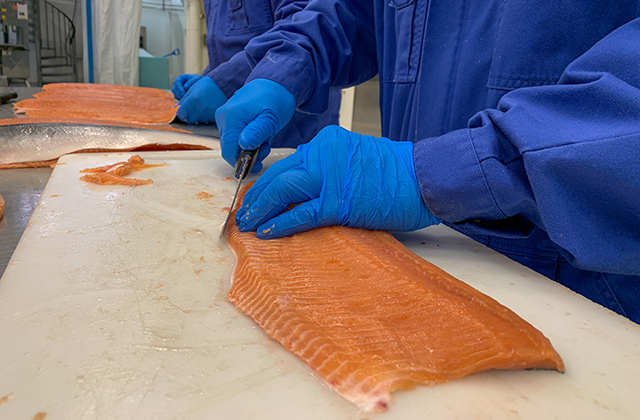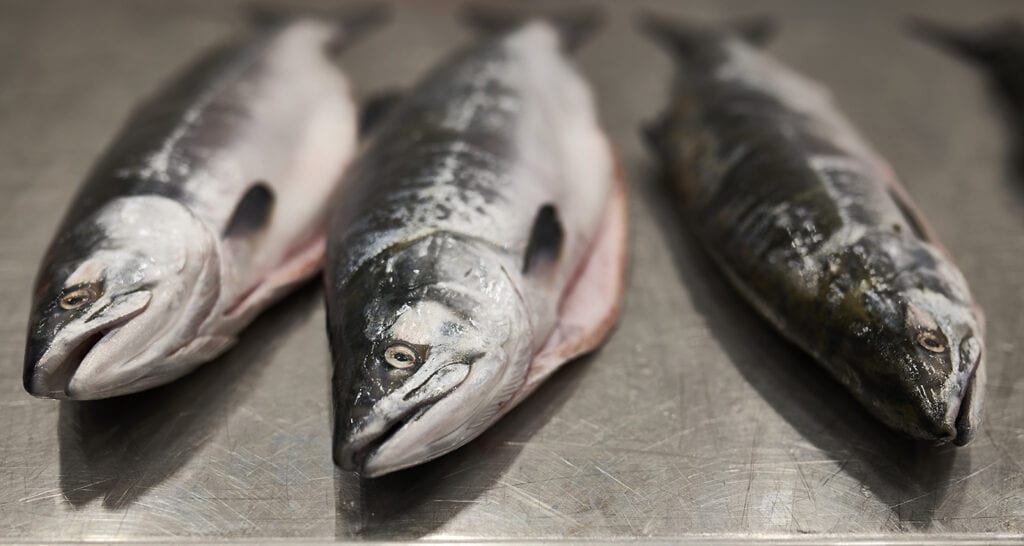Value creation from pink salmon

In this project, we investigate the quality characteristics of pink salmon, a species that is currently invading the Norwegian coast. We also explore possibilities in utilising it as a food resource.
Start
24. Jun 2021
Funded by
Nofima
Cooperation
Fisherman Erling Haugen, Bugøynes
Project Manager(s):
Other Participants:
Background
Pink salmon, or humpback salmon as it is also called, the species of salmon that enters the North Atlantic Ocean during the summer, has many names. In Norway it is considered an invasive species , and therefore it is important to keep an eye on its prevalence. During the summer of 2021, the amount of pink salmon off the coast of Northern Norway has been unusually large. The concern is that it will spawn in Norwegian rivers and affect the population of the wild Atlantic salmon.
At the same time, the pink salmon possesses characteristics that make it well suited for human consumption, and when it arrives along the shore in great numbers, it can provide new opportunities for the seafood industry. Prior to entering the rivers, and still in the ocean the pink salmon t have appearance and taste similar to Arctic sea charr or young trout; both the fish and the roe would be well suited for new seafood products.
Pink salmon as a food resource
In Norway, we have little commercial experience with this species when it comes to capture, processing the raw product, production regimes, product characteristics, storage and shelf life.
The project is establishing necessary knowledge about pink salmon as a food resource, and exploring the possibilities of how it can be utilised as a resource along our coast.
We are mapping pink salmon food characteristics through storage trials and measurements of quality. Nofima has extensive knowledge about the quality of salmon and trout, and this is a useful reference when assessing the characteristics of pink salmon. Process quality and shelf life are related to the method of capture and how the fish are handled following catch, and this is important to investigate and highlight.
In these trials, we use sensory methods such as QIM (Quality Index Method) and schemes assessing the fillet quality, and also instrumental measurements of quality such as hyperspectral imaging and the Maritech Eye. The instrumental methods provide us with knowledge about parameters like fillet colour, fat content and blood content.
We also study how the fish should be handled during and after capture, and the type of fishing gear that is best suited.
Nofima’s experience in industral development and commercial potential of new species enables us, together with seafood industry actors, to investigate how this new species can also initiate value creation along the coast.
